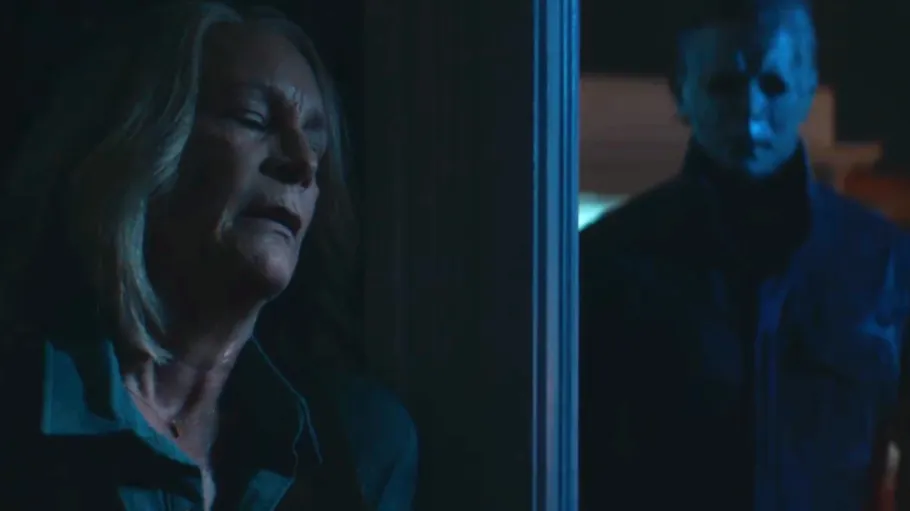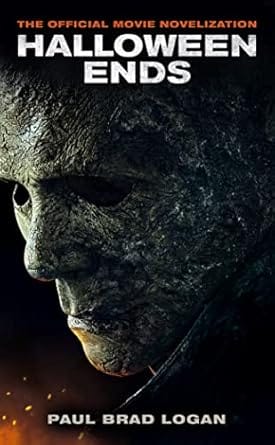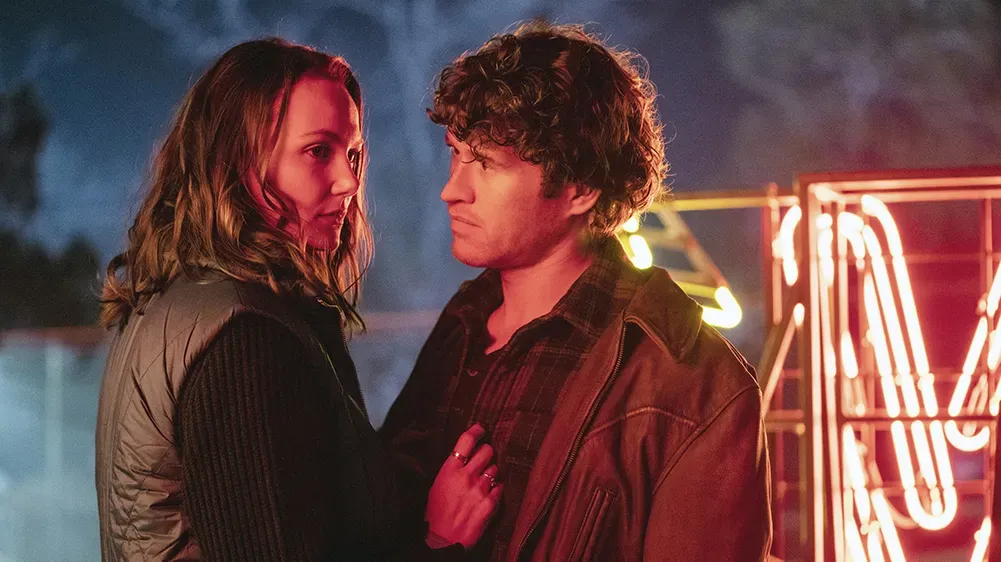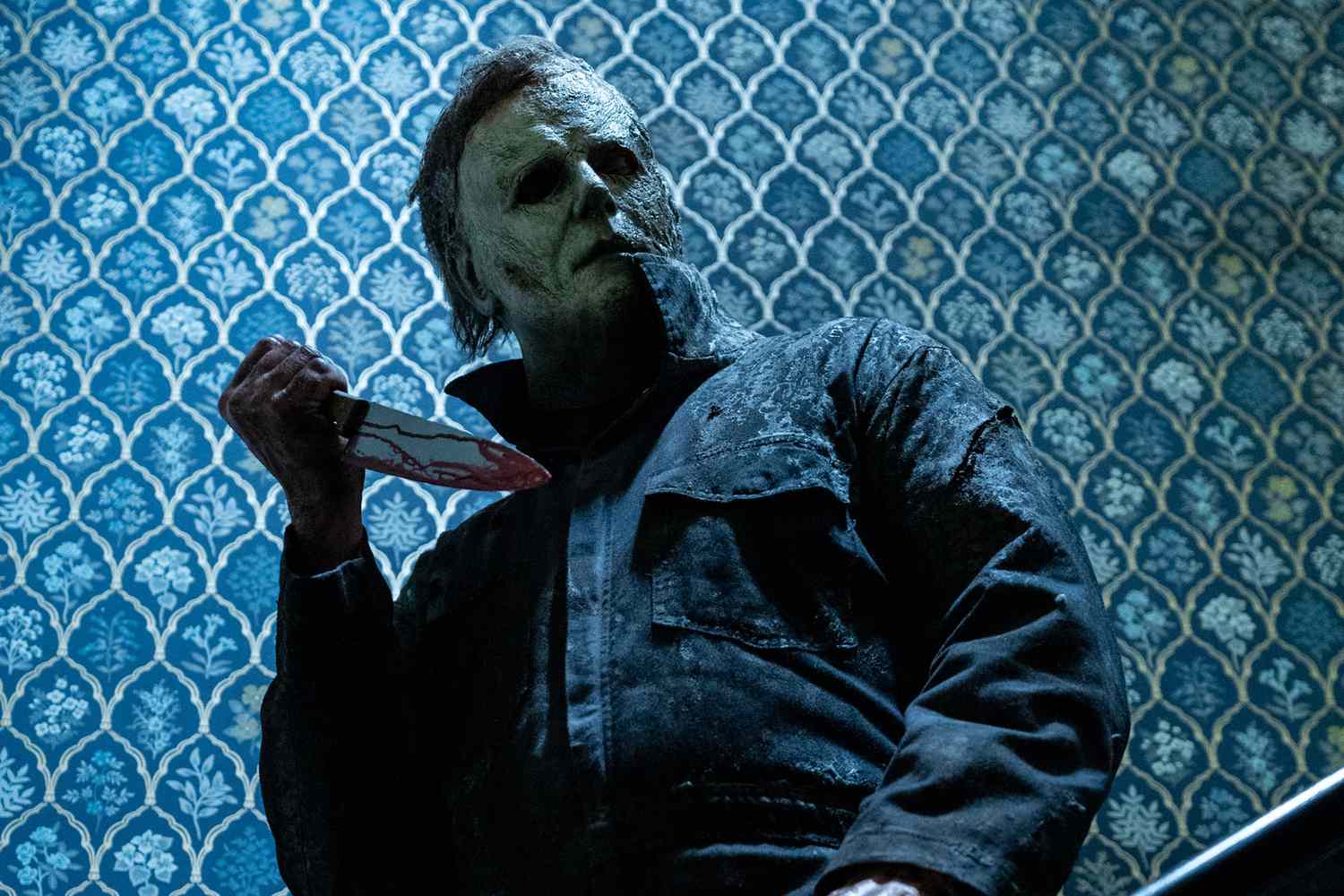Hollywood & Spine Archive: Halloweek, Part 4 - Evil Changes Shape
An overview to the novelization of HALLOWEEN ENDS, originally published December 2022.

When I originally posted this, a friend suggested that the film "seemed like a story that might be cooler if it wasn't connected to Myers." He might be on to something - imagine if this went further afield and disregarded The Shape entirely? I dunno - I still think this is a pretty neat film with some thoughtful bits in it. Happy Halloween! One last scare coming for you tomorrow. (originally published 12/13/2022)

Halloween Ends: The Official Movie Novelization by Paul Brad Logan (based on the screenplay by Paul Brad Logan & Chris Bernier & Danny McBride & David Gordon Green; based on characters created by John Carpenter and Debra Hill) (Titan Books, 2022)
The pitch: It's been four years since Michael Myers' second rampage through the suburb of Haddonfield. As his most famous survivor picks up the pieces, the killer's legacy spreads darkness and evil in chilling ways.
The author: It's not only the most intriguing twist in the modern Halloween series, but also a rare moment in novelization history: Paul Brad Logan is one of four writers on the film's screenplay - he also wrote the script for 2014's Manglehorn, which Halloween reboot director David Gordon Green helmed - and the sole writer of this novelization.
The lowdown: Once in a great while, a novelization comes around that changes your mind about a movie - through its prose, it unlocks untold potential within the screen story and makes you moony-eyed for what could have been. Halloween Ends is very nearly that novelization.
I say "very nearly" only because I found myself in the critical minority of this film, a definitive end to the franchise that made John Carpenter a legend of horror. Where most critics found it a weak closing chapter, I found it affecting, refreshing and layered for what it was (the third legacy sequel in five years to a genre classic). I enjoyed how it spent half its running time cosplaying as a character drama instead of a slasher film; I found its takes on the scars trauma and tragedy leaves behind to be much more trenchant than Halloween Kills; and I enjoyed the way it approached narrative finality even with a hint of ambiguity throughout.
If you hated all of that in Halloween Ends and wanted more killing and villainy, the novelization brings good news and bad news. The bad news is it still has all of that character stuff, but it also has a lot more violence, a healthy offering of fan-service-y filling in the gaps between the last film and this one, and also some truly weird implications about one of its central characters that might have meant to be used in the final film. If you read this after seeing the movie, you'd be forgiven for wishing Halloween Ends was more like the book. I certainly did!

So what happened in between those movies? While Halloween and Halloween Kills take place one after the other, Halloween Ends' action is largely four Halloweens later. We see Laurie has picked up the pieces after losing her daughter to Myers, and lives in a quaint house with her granddaughter Allyson. Revenge seems to be the last thing on her mind; instead, she's processing her 40+ years of dealings with the masked killer by writing a memoir.
But as we learn in the book, it was a process to get from there to here. After Kills, Laurie is still consumed with revenge - don't forget, the ending of the Kills novelization ultimately cut from the final film sees Strode pick up a knife ready to engage her tormentor - and "aligns with fringe groups" set on finding Myers and doling out revenge. The cowboy-hatted Sheriff Barker (seen briefly at the end of the film and the book) resigns in disgrace, and Laurie keeps approaching the abyss until hitting rock bottom and letting Lindsey Wallace (the girl who she babysat in the first film, now grown up and still played by Real Housewives cast member Kyle Richards) get her some much-needed therapy. (More on her book in a bit.) It's worth noting that the novelization more clearly spells out how Laurie's new outlook clashes with Allyson's dead-end existence; it's clearly a source of tension between the two, and keeps you in some suspense throughout.
Myers doesn't exactly disappear throughout the Ends novel: he kills a pair of garbage collectors and steals their truck, and is connected to a small string of murders (including a teenage couple a year after Kills, one of whom is Kim, the girl who kissed Allyson's boyfriend Cameron during the school dance in Halloween (2018)). He's not seen by the town until much, much later - but his influence? That's another thing entirely.
Do we learn anything from Laurie's book? We sure do! A novelization means we can get whole meta-passages of that book she's writing (which, the novel makes clear, was Officer Frank Hawkins' idea after doing a lot of wild stuff to address his own trauma, including learning cooking, Japanese and playing guitar). The juiciest passage concerns Laurie's life in the immediate years after the Babysitter Murders of 1978: her father drops dead of a heart attack and her mom finds dealing with Laurie's trauma untenable, sending her to live with other family members. She stays in contact with Dr. Loomis, who in the early '80s lets her in on a chilling story that forms a major backbone of this book: another patient at Smith's Grove becomes exceptionally unwell after a cell transfer puts him in closer proximity to Michael. Eventually, that patient murders two orderlies before killing himself.

Wait - was Michael cosmically responsible? It sure seems that way! The most fascinating - perhaps controversial - thing about the Ends novelization is an attempt to explicitly explain Michael Myers as a pure being of evil with enough power to transfer that evil to others. And we're not just talking about Corey Cunningham, the babysitter whose unfortunate accident makes him a social outcast (and - spoiler - the eventual secondary antagonist of the film). Shortly after Myers' escape, he happens upon a cabin occupied by a deadbeat father who's kidnapped and abused his young daughter. One encounter with Myers and she gains the power to kill her captor. There's a similar relationship with the vagrant who's seen around the drainpipe in which Michael takes residence between the two films: according to the novelization, he was also a homicidal Smith's Grove inmate who managed to escape in the bus crash that freed Myers in the 2018 film, and works under his influence to find The Shape new victims.
That transference of evil is spelled out explicitly when Corey encounters Myers and drinks in that pure uncut evil. His eyes blacken and he willingly succumbs to that darkness as his own world seems more and more hopeless. I'm of two minds as to whether or not it would have worked in the final film - Halloween historically seems to work better when its evil is implicit or primal instead of supernatural - but in prose form, this works much better than the last two books' attempts to take you into the simple mind of The Shape. And when Myers turns the tables on his would-be apprentice, taking that evil back and using it to fuel his climactic battle with Laurie, it might give you a bit of a chill.
Are there any other crazy backstories? Oh yeah! Corey's overprotective mother is choked by her own tragedy - she is estranged from her own family after her resentment over her siblings caused an accident that killed her youngest brother. Her presence throughout the book is deeply chilling. Less worrisome but still not ideal is how Terry, the head of the teens that bully Corey throughout the movie, is explicitly verbally abused by his own dad. (There's another reference to the series lore therein: Terry's a descendant of Ben Tramer, the unseen would-be crush of Laurie's in the original film who gets insanely blown up in the non-canon Halloween II (1981).)
The slashing room floor: Even with all that extra backmatter in the book, the Halloween Ends novelization features more excised material, some of which was filmed and included in the extras of the film's forthcoming home video release. Corey's encounter with Myers is longer, and shows that the sadistic Shape has been keeping remains of his victims in the intervening years in some sort of grisly tableau. We get another unusual (and as far as we know, unfilmed) flashback involving an older cop who encounters Corey in the diner. This character, Elvis Jones, attempted to steal Laurie Strode from Hawkins at a bar in the early '80s - only to come face to face with Laurie's post-Myers mania, as she threatens him at knifepoint attempting to kill the incarcerated murderer.

In Laurie's concern for Allyson, she ventures to Corey's house and has an uncomfortable encounter with his mother, who blames Laurie for making her son the town's scapegoat after Myers couldn't be recaptured. (In the book, this follows a rather unsettling, mostly implied, sexual encounter between Corey and Allyson that involves some grisly sadomasochism.) She also has more heart-to-hearts with Lindsey, who encourages her to "take the choice" and move on from her remaining trauma.
Perhaps the most interesting excised material follows Michael after Corey steals his mask and goes on a killing spree in his image. The unmasked killer shows up at the former location of his family home - now it's a community garden, as noted in the novelization to Halloween (2018) - and spooks a gang of teens attempting to ritually communicate with the killer. (Great detail: the kids are named John, Debra, Tommy, Nick and Dean - all key crew members of the original 1978 film.) Crucially, in the book it's Myers, not Corey as Myers, who kills Corey's mother. (That gruesome scene was filmed and mostly cut to look like it was matricide.)
The book also has a slightly sinister downer, ending in a way the film did not. Though she still successfully kills Myers, Laurie does not entertain a reconciliation with Hawkins; their last encounter is brief, muted and punctuated by Laurie backsliding into her old ways, locking many locks behind her as she says goodbye. (Myers' mask is still in her possession, "waiting for its new shape.")
The last word: Halloween Ends is a novelization that expands (some might say improves!) upon the experience of seeing the film in every way. Well-written with intriguing extra material that makes you wonder how it would've worked in the actual movie. A fine period on the end of the paragraph of David Gordon Green and company's additions to the Halloween legacy.
